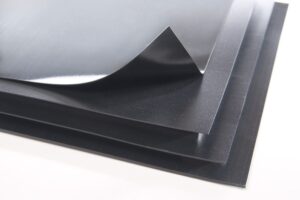What is the function of geomembrane
Geomembranes are synthetic materials used in civil and environmental engineering applications to control the movement of fluids or gases. These membranes are impermeable sheets or barriers that are designed to prevent the seepage of liquids or gases through a barrier. The primary function of geomembranes includes:
Containment: Geomembranes are often used to create barriers that prevent the migration of liquids, such as water or contaminants, from one location to another. This is particularly important in environmental protection and waste containment applications.
Environmental Protection: In environmental engineering, geomembranes are used to line landfills, hazardous waste storage facilities, and other containment areas to prevent the escape of pollutants into the surrounding soil and groundwater.
Water Management: Geomembranes play a crucial role in water resource management. They are used in the construction of reservoirs, ponds, and canals to prevent water seepage and ensure efficient water storage and conveyance.
Mining Applications: In the mining industry, geomembranes are employed for containment and separation purposes. They can be used to line tailings ponds, heap leach pads, and other structures to prevent the release of potentially harmful substances into the environment.
Erosion Control: Geomembranes can be used to control erosion by preventing the movement of water through soil. This is important in applications such as riverbank stabilization and coastal protection.
Secondary Containment: Geomembranes are used to create secondary containment systems for industrial facilities. In the event of a spill or leakage, the geomembrane acts as a barrier to prevent the escape of hazardous substances.
Aquaculture: Geomembranes are utilized in aquaculture for pond lining to control water seepage and to maintain optimal water levels for fish farming.
Wastewater Treatment: Geomembranes are employed in wastewater treatment facilities to create liners for lagoons and containment structures, preventing the infiltration of contaminants into the surrounding environment.
Geomembranes come in various materials, such as high-density polyethylene (HDPE), polyvinyl chloride (PVC), and ethylene propylene diene monomer (EPDM), each with specific properties suited to different applications. The selection of the appropriate geomembrane material depends on factors such as environmental conditions, chemical resistance, and the specific requirements of the project.

What is the geomembrane installation process?
The installation of geomembranes involves a series of steps to ensure proper placement and secure containment. The exact process may vary depending on the specific project requirements and the type of geomembrane material being used. Here is a general outline of the geomembrane installation process:
Site Preparation:
Clear the area of any vegetation, debris, or sharp objects that could potentially damage the geomembrane during installation.
Grade and compact the subgrade to create a smooth and even surface.
Subgrade Inspection:
Inspect the subgrade for any irregularities, rocks, roots, or other objects that could puncture or damage the geomembrane. Address any issues found.
Geotextile Installation (Optional):
In some cases, a geotextile underlayment may be installed on the prepared subgrade to provide additional protection to the geomembrane and enhance its performance.
Panel Layout:
Unroll and lay out the geomembrane panels on the prepared subgrade, allowing for sufficient overlap between panels and ensuring that wrinkles and folds are minimized.
Seaming:
Join geomembrane panels together using appropriate seaming techniques. The two main types of geomembrane seams are:
Thermal Seaming: Involves the use of heat to fuse the geomembrane panels together.
Chemical Seaming: Involves the use of adhesives or solvents to bond the geomembrane panels.
Field Testing (Optional):
Conduct field tests, such as spark testing or vacuum testing, to ensure the integrity of the seams and identify any potential leaks or defects.
Anchor Trench Installation:
Excavate and install anchor trenches along the edges of the geomembrane to secure it in place and prevent uplift.
Termination Detail:
Install termination details at transitions between the geomembrane and other structures, such as pipes, walls, or concrete structures, to ensure a watertight seal.
Field Repairs (if necessary):
Address any damage or defects identified during the installation process through appropriate repair methods, such as patching or additional seaming.
Final Inspection:
Conduct a final inspection of the entire geomembrane installation to ensure that it meets the project specifications and quality standards.
It’s important to note that the installation process may vary based on factors such as the type of geomembrane, environmental conditions, and specific project requirements. Additionally, adherence to industry standards and guidelines is crucial to the success of the installation. Professional geosynthetic installers with experience in geomembrane installation are often consulted to ensure the proper execution of the project.
Author

Founded in 2002, Tinhy's team focuses on the manufacturing, marketing, installation, application and research and development of geosynthetic materials.
View all posts






